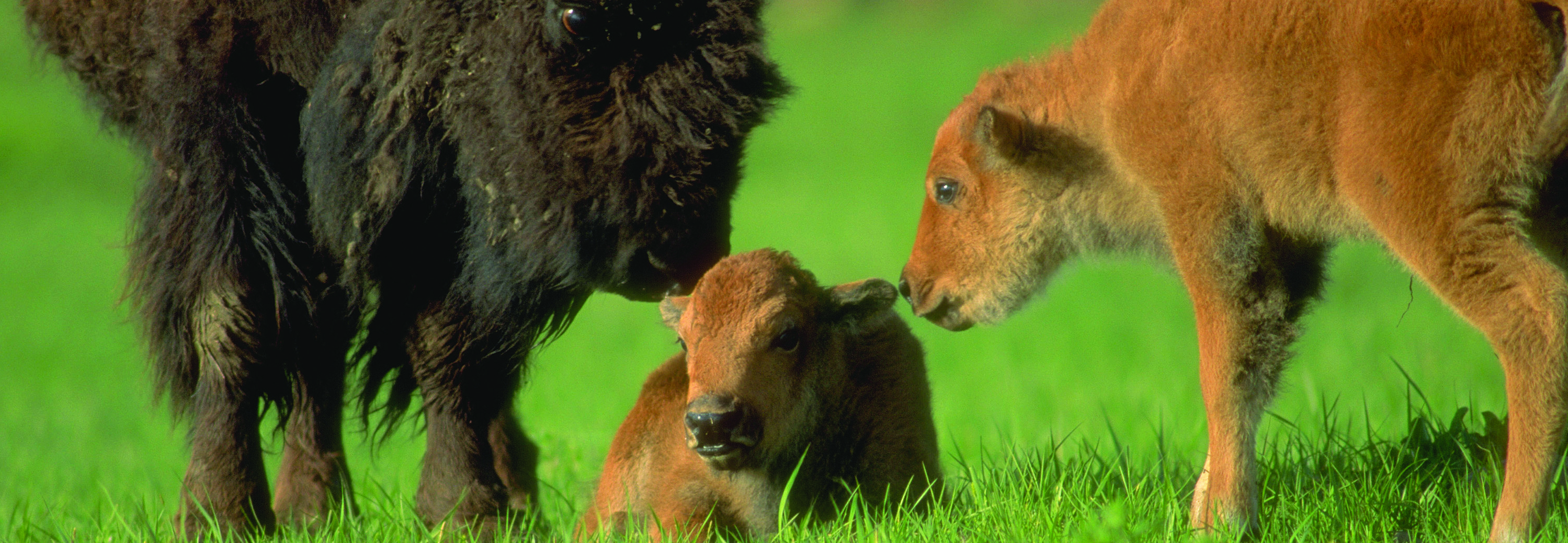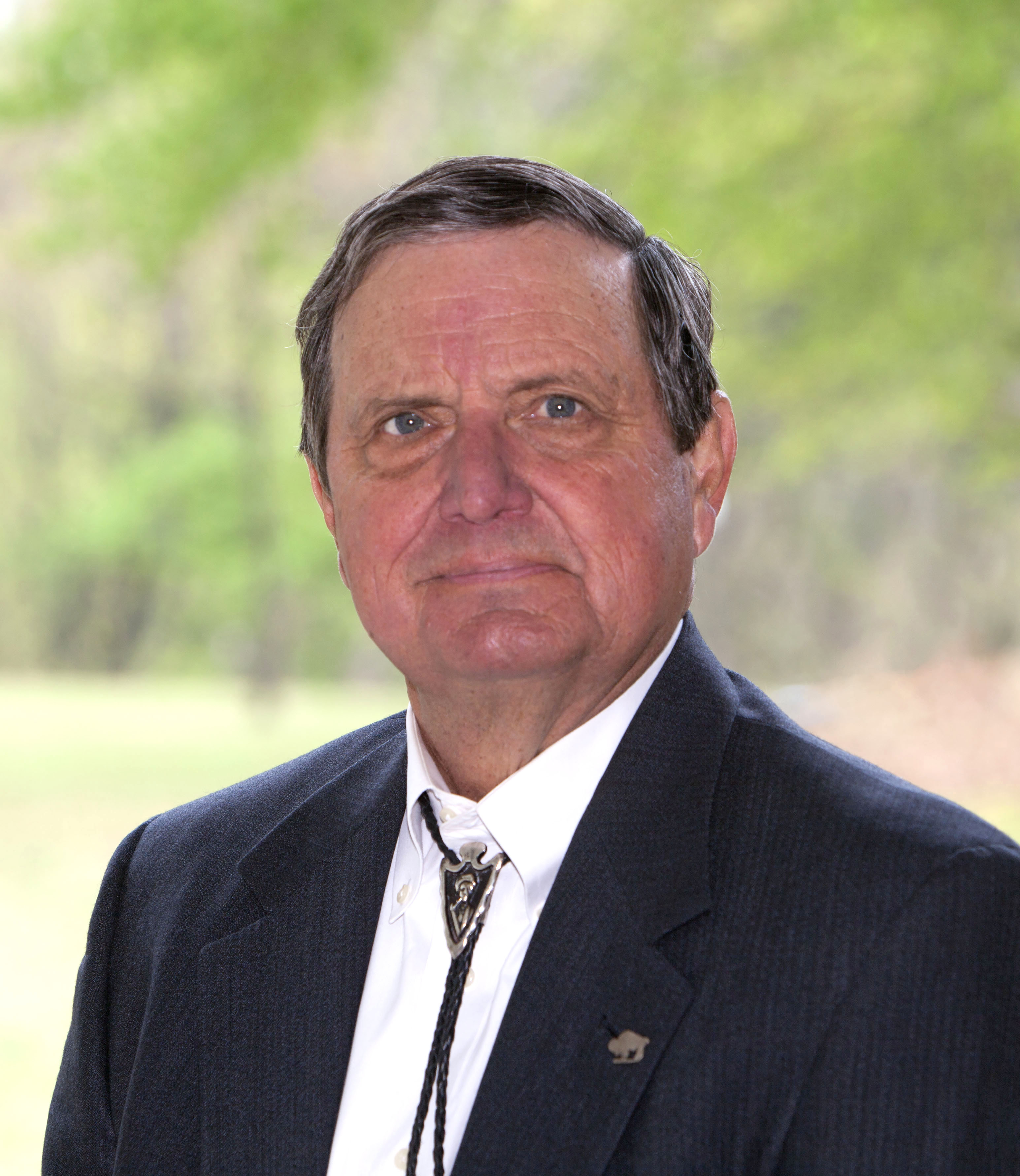Rootstalk: What can you tell us about the prairie?
Payne: The tallgrass prairie as an ecosystem stretched from southern Canada down through the central part of the United States all the way to the Gulf Coast. Most people think it was the largest ecosystem in North America at its apex. It was shaped by climate, by grazing and primarily by bison and by fire since the last ice age. The glaciers extended down to central Kansas. But after the last ice age, tallgrass prairie evolved. We’ve done a historical study here, and 20,000 years ago this was a spruce-jack pine forest, it was much like northern Minnesota is today: boreal forest. Cooler and wetter than today. Climate change and the burning done by Native Americans shaped this ecosystem, [so] basically it’s a human induced ecosystem. Without the fire, what was tallgrass prairie would have been a forest, and it would be a forest today without fire. Grazing by ungulates, primarily bison, also shaped it, and elk, the second most numerous mammal after bison, played a role as well.
Rootstalk: How has prairie management developed? What is the history behind the sort of prairie restoration you do today?
Payne: So, it’s been a goal of the National Park Service and the major conservation organizations in the country to establish a prairie park since the 1930s. And those efforts were originally in the Flint Hills of Kansas. Tallgrass prairie has become the most threatened landform in the world. Most people will say less than four percent remains, but basically it died as an ecosystem with white settlement and the extirpation of the bison. The bison were killed out of the tallgrass prairie [though some remained elsewhere, on the shortgrass prairie]. The last recorded bison anywhere in the tallgrass ecosystem was killed in northern Osage County Oklahoma, which is where we are, about 1851. White settlement led to fire suppression, and fuel removal with cattle grazing, and then extirpation of the bison. So, the ecological forces that produced this landscape ceased to exist except for the climate. The ecosystem basically died, and so what we are doing is putting those ecological forces back into play. We do prescribed burns that mimic the seasonality of fires that shape the prairie, and the bison are here for the grazing influence they provide.
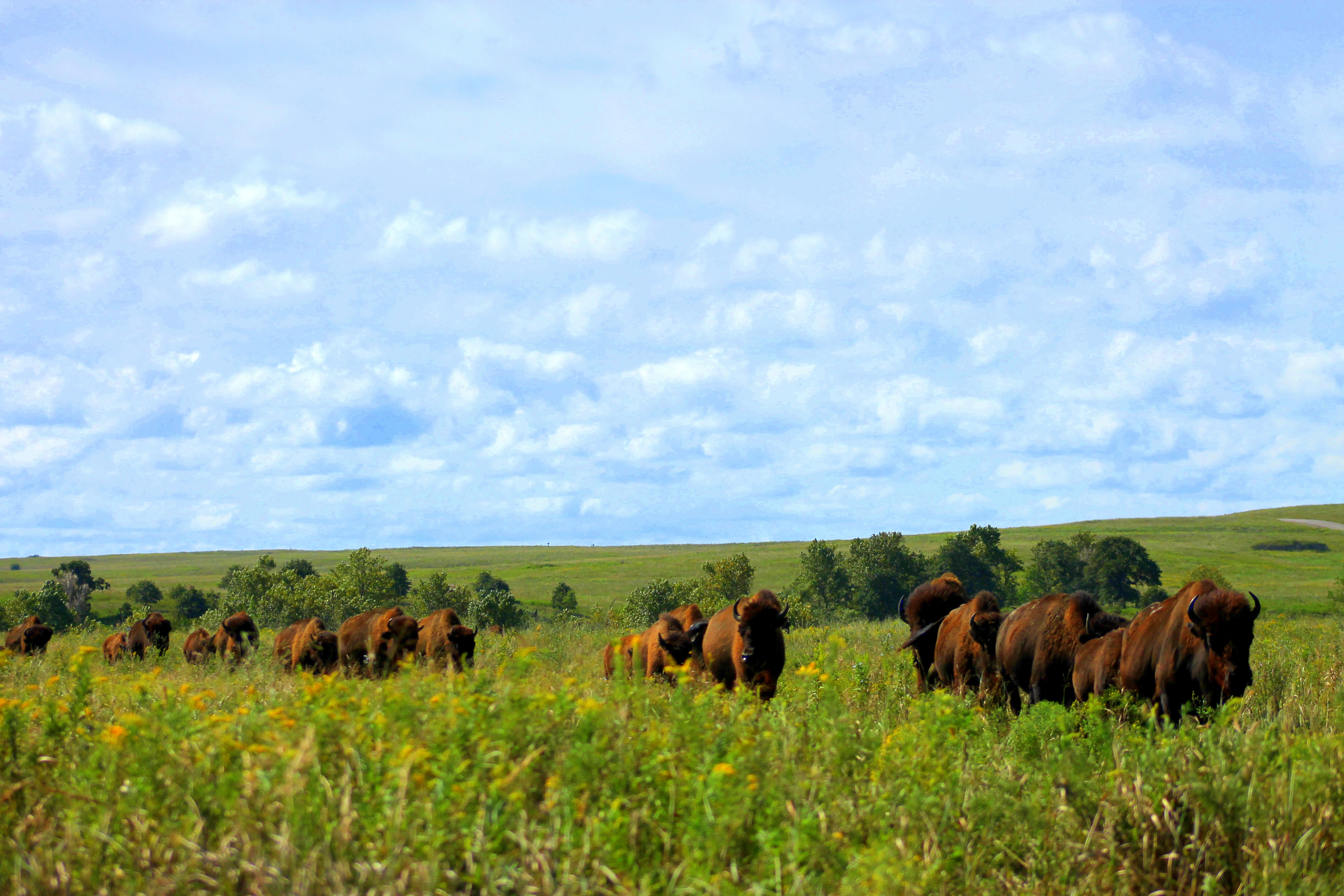
A Small Part of the 2,500-head bison herd which roams freely over the Joseph H. Williams Prairie Preserve. Photo by Carmon Briggs
Rootstalk: How did the Joseph H. Williams Tallgrass Prairie Preserve develop?
Payne: An effort began here in 1984 to establish a tallgrass prairie national preserve that would have been owned and administrated by the National Park Service. A bill was introduced in 1987 in the United States Senate to do that, and in 1988 that bill died. But in 1988 you had some unusual circumstances. High-quality prairie lands, a lot of them owned by big ranches, were on the market. They hadn’t been on the market for a long time, and the reason a lot of them were up for sale was because of terrible economic conditions in the ranching business. Lands that had not been for sale now were, and value was about half what it had been a few years before. So, in 1988 the Mormon Church came and bought 67,000 acres from the Adams family, including part of what was to have been in the Tallgrass Prairie National Preserve. With the death of the federal bill, The Nature Conservancy realized that an opportunity to buy land like this would soon be lost, and if they didn’t move very quickly, who knew when they would get another chance? So, in 1989 The Nature Conservancy purchased the Barnard portion of the Chapman-Barnard ranch—29,000—plus acres of the best tallgrass prairie in the world—and established the Tallgrass Prairie Preserve.
Rootstalk: What does the Preserve look like today?
Payne: It has since grown; today we own about 39,000 acres. We lease about a thousand acres contained within our boundaries. Plus, we have conservation leases on another 11,700 acres. So, the conservation footprint is well over 50,000 acres. In 1993, on October 18, we reintroduced 300 bison onto 5,000 acres. That herd has since grown. We do a roundup every year, the first one in 1994. But the herd right now is about 1,750 animals and then we will have 5-600 calves born this spring, and they’re free-roaming on about 25,000 acres.
Rootstalk: Do you have any personal interest in the prairie? Have you worked on or given any talks related to [it]?
Payne: I’ve given talks since 1984. I gave one Wednesday (chuckles).
Rootstalk: Is there an aspect of the prairie that especially interests you?

A cow bison and two young calves—one hers, the other belonging to one of her herd-mates. Photo by Harvey Payne
Payne: I was raised on a ranch west of the Tallgrass Prairie Preserve. In fact, when I was in high school, we ran cattle over on what’s the preserve now. So, my family has been involved in ranching in Oklahoma since 1891. My wife and I have our own farm and ranch, mostly ranch, and I’ve been around it my entire life. What I can tell you is the more you learn about the prairie and everything that lives here, the more you realize you don’t know. And it’s a very complex self-perpetuating ecosystem if it’s given a chance.
Rootstalk: You mentioned the prairie has disappeared over time. What does it look like today compared to how it used it be?
Payne: It is the most threatened landform in the world. [As I said] less than four percent remains, and no place else except at this preserve is it portrayed as a functioning landscape. That’s amazing. Some great scientists will tell you tallgrass prairie originally encompassed over 250 million acres. The Nature Conservancy’s official number is 142 million acres. And you have 40,000 acres left that functions like it did originally. That tells you there is a pretty big problem. We’ve got about 250 species of birds. And then countless insects, reptiles and amphibians. It was a very productive landscape until white settlers came along and changed things. You read there were 30 to 60 million bison in America. Most of those were on the Great Plains. The first thing you learn in science is that “nature abhors a vacuum.” If there’s a food source there, something is going to evolve to consume it. And the tallgrass prairie was the most productive of any of the prairies. It got transformed into America’s breadbasket. The cereal you ate this morning, if you did, probably came from tallgrass prairie. Illinois, nicknamed the prairie state, originally had 40,000 square miles of tallgrass prairie, and now they have less than four square miles. Less than 1/100th of one percent. That’s alarming. There’s a lot of work done in Minnesota, in southwestern Minnesota especially, to try to preserve what little bit of tallgrass prairie you have left. It’s mostly farmland. And drive through Iowa. It’s all farmland. And Kansas. It’s amazing what happened. The prairie was referred to as the great American Desert until John Deere developed the steel plow, because a wooden plow could not turn the prairie sod. But when John Deere developed the steel plow, things changed really fast. So, in 1836 they developed the steel plow, that’s when the demise of the tallgrass prairie began. And it went at a very rapid pace.
Rootstalk: I first learned about this preserve because I saw a little news clip on the big roundup of bison that happens every year. I wondered if you wanted to say anything about that whole event.
Payne: The annual bison roundup is a pretty exciting thing. The Bison numbers were kept in check basically by wolves, originally. They didn’t evolve going through a set of corrals every year, which is what we do to keep their numbers down. You read historical accounts by some early travelers through this area which would say the number of wolves almost equaled the number of bison. I don’t know if that’s true or not, but you read it. But now the wolves are gone so the bison have no natural predators. Basically, we are the predator, and so the purpose of the roundup each year is to remove surplus animals. We have a fixed area for them to graze, and a desired number of bison to graze that area. Each year we sell a number of bison, older animals generally, that [approximately equals] the number of calves we have born that year. We do it to control our grazing pressure. We also give them inoculations to prevent disease, and it’s basically the same inoculations that our neighboring rancher gives their cattle. It’s to keep the herd at a constant level and to maintain a disease prevention program. It’s also a lot of work.
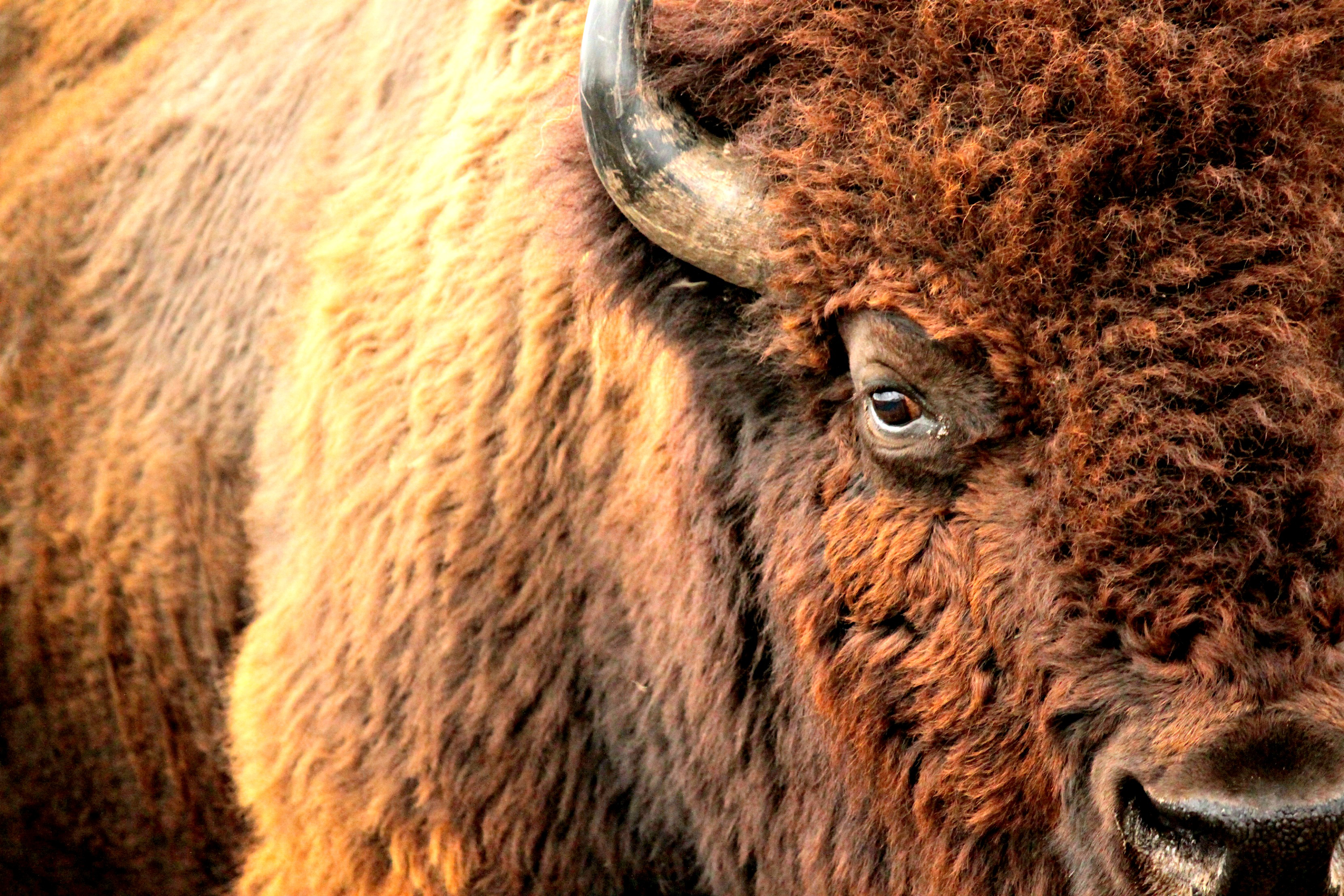
Up close and personal with one of the preserve’s herd. Photo by Josie Briggs
Rootstalk: Can you say more about that, about the process of the roundup?
Payne: Like I said, the bison are roaming year-round on almost 25,000 acres. That’s a big chunk of land. Some of that is forested, but most of it is open prairie. There are hardwoods too. So, there are a lot of places for the bison to hide. We first had 300 bison on the 5,000 acres, that was in ‘93. Then the range that they occupied grew each year, and the numbers of bison grew accordingly. We started out trying to round them up using four wheelers, everybody gets on a four-wheeler and spreads out and pushes them this direction into the corral. Well that turned out not to work very well, because you’ve got a lot of grass, you’ve got a lot of rocks, you’ve got a lot of ditches, you’ve got a lot of holes. You can see what’s going to happen trying to outrun a bison that can run 30 miles an hour across that. People were getting hurt and we could see bad things happening.
Rootstalk: How did you resolve that; did you change your strategy?
Payne: So a number of years ago we started using a feeder on the back of a couple of pickup trucks. We would go out and blow the siren like our ranching neighbors do and the bison would hear that a mile or two away. We put out cattle cubes, a pellet of ground-up grain and molasses that they love to eat. The bison that had done that before remembered it, and boy, here they come! We would just drive through with the pickup and the feeder and they’d follow it. We have a number of internal fences with the gates open, and we’d just pull the bison in and close the gate. And that’s how we would get them into the corral area. And we have some holding traps around the corrals. And then to push them actually into the corral per se we would use six pickups. You can’t pull them into the pipe pens. You can pull them into the pastures with the little holding traps around that with those pickups, but they don’t want to go into those corrals. And we have some specially designed equipment to handle large animals, and it takes about a week to run them all through.
Rootstalk: And what do you do with the bison once you’ve got them all corralled up?
Payne: We give the bison their inoculations and we keep detailed records of each animal. We put a transponder in their left ear which identifies that animal with the scanner and then we have a metal tag in the right ear with the serial number. This makes it so we can identify them through the transponder, if that works. If it fails, we’ve got the metal ear tag with the serial number. If both of those fail or are gone, we also have branded the last digit of the year of their birth on their left hip from when they’re calves. Then we sell the bulls when they’re six and a half. We sell the cows when they’re ten and a half. And we’ll sell some yearling animals too. So, it’s a pretty involved process. It usually takes about 15 to 18 people to make it work. We keep detailed computer records on each animal when they go through the scales or go through the working chute. Starting when they are calves, we record what shots they’re given, so we know quite a bit about them.
One other thing you might be interested in, that we did a number of years ago. There’s a professor at Texas A&M University named James Derr, and he’s an internationally known expert on genetics. We pulled tail hairs from the bison. He could do DNA tests on each bison using the hair follicle. This allowed us to look at to what extent cattle genes were mixed into our herd.
Rootstalk: Why did you want to know that information? Is crossbreeding between cattle and bison common?
Payne: We got down to 541 plains bison in North America at one point. They were saved by ranchers. Generally, they were trying to develop a hardier animal, by crossing cattle with bison to produce an animal that you didn’t have to feed in the winter, could stand hard winters, was tougher, more vigorous. Well that didn’t work, but what happened was cattle genes got introduced into the bison genetic pool. You’ve got two types of DNA, you’ve got the mitochondrial DNA, that drives the engines, what makes the animal act like a bison. Then you’ve got the nuclear DNA, that’s much broader. Now mitochondrial DNA is only passed from females. So, what we did was we culled out all of the female bison that have cattle DNA in their mitochondrial DNA, so animals we are left with are as genetically pure a herd as we think we can get. The only herd in North America that’s generally considered to be pure bison, however, is the Yellowstone herd, or animals that have come from the Yellowstone herd.
Rootstalk: But your bison herd is pretty close to that, I would suppose.
Payne: Our bison are as genetically pure as we feel like we can get them.
Rootstalk: So how does the breeding program work? You said you sell off a lot of the bison.
Payne: We run about one bull to about eight cows, and they’re just all mixed up. The bison historically breed in the late summer. Then they’ll have calves starting here usually mid to late March, with the big burst in April and May. Historically, when you had a lot of wolves around, they were a lot better at picking off the calves than picking off the adults. So, if you have all of your calves born at the same time you got a lot better chance for them to make it than if they’re born throughout the year. So that’s part of the evolutionary process bison went through. The breeding is generally done by dominant bulls, although there have been some studies done, at Custer State Park in South Dakota, I think, where young bulls breed about 20 percent of the cows because the big bulls would be fighting and the little bulls would swoop in and take care of business. I was surprised to see that.
We sell bulls when they’re six and a half years old, generally. We’ve had some go through the roundup that were nine and a half. But when you sell them, you’re supposed to sell them by truck load, and first of all, we don’t always get all of them when we round them up. We miss a few every year. And then sometimes you just don’t have an even truckload, so you leave a few. Breeding season is pretty amazing. Those bison bulls, when they’re full of testosterone, they roar like a lion on the Serengeti plains. It’s something to see and hear.
Rootstalk: And how do you provision the bison? Do you feed them in the winter, or do they forage for food?
Payne: No, we don’t feed them. They’re on their own. We do give them salt and mineral, because historically they would have roamed a much bigger range than 25,000 acres. So, we want to make sure they have that, but nobody fed them historically and they got along just fine. They will lose weight during the winter, but when green grass starts popping up, they’re all over it. The other thing we’ve learned is that by burning in the late summer and the fall you remove that thatchy growth. If you look at all the prairie now, where it wasn’t burned for a while, you see a lot of dead grass. That acts as shade from the sunlight. When the prairie is burned in the fall or the late summer, you don’t get a lot of regrowth because the bison graze the new growth following a burn very intensively, and so that exposed soil will warm a lot faster. The cool season grasses will come on faster also during the winter by removing that thatchy growth, the dead warm season grasses mostly. You then get cool season grasses proliferating, and sedges and rosettes, and those are very palatable and nutritious. They all have a very high protein content. That dead grass is about like straw—it has very little nutritional value—but that new green stuff that will grow during winter is very nutritious and desired by bison, so they will eat that. Now they will eat some dead grass, but not very much.
Rootstalk: What are the relations with neighboring ranchers like? I have heard that sometimes brucellosis can be a problem and ranchers don’t like the bison getting near their cattle.
Payne: That’s exactly right. Right at the beginning there was a lot of fear, a lot of fear of the unknown, when the Nature Conservancy bought this and announced that we were going to be bringing in bison. A lot of the ranchers thought, “oh my god, here we go.” Well the herd, the 300 animals that were given to us to start the herd were certified disease free by the Oklahoma State Department of Agriculture. Certified disease free. Hardly any cattle herds are certified disease free. That involves rigorous annual testing. So that allayed those concerns, and then we vaccinate the heifer calves for brucellosis. And that must be done by a licensed veterinarian.
Rootstalk: So, have you had any problems at all with disease?
Payne: The only disease problem that we’ve had that would be of concern is probably 10 years ago, a neighboring rancher took their steers to the feed lot and then from the feed lot to the slaughterhouse, and one of them had tuberculosis. They probably ran 20-25,000 steers; he really had no idea where it came from, but they said it came from this pasture. They pointed to one right next to our bison unit. So, we had to test all of our bison for tuberculosis. That can only be done by the state veterinarian. It can’t be done by a local licensed veterinarian. We had to run all the animals through the corral so the vet could give them a shot at the base of the tail, and then run them through again to see if they reacted.
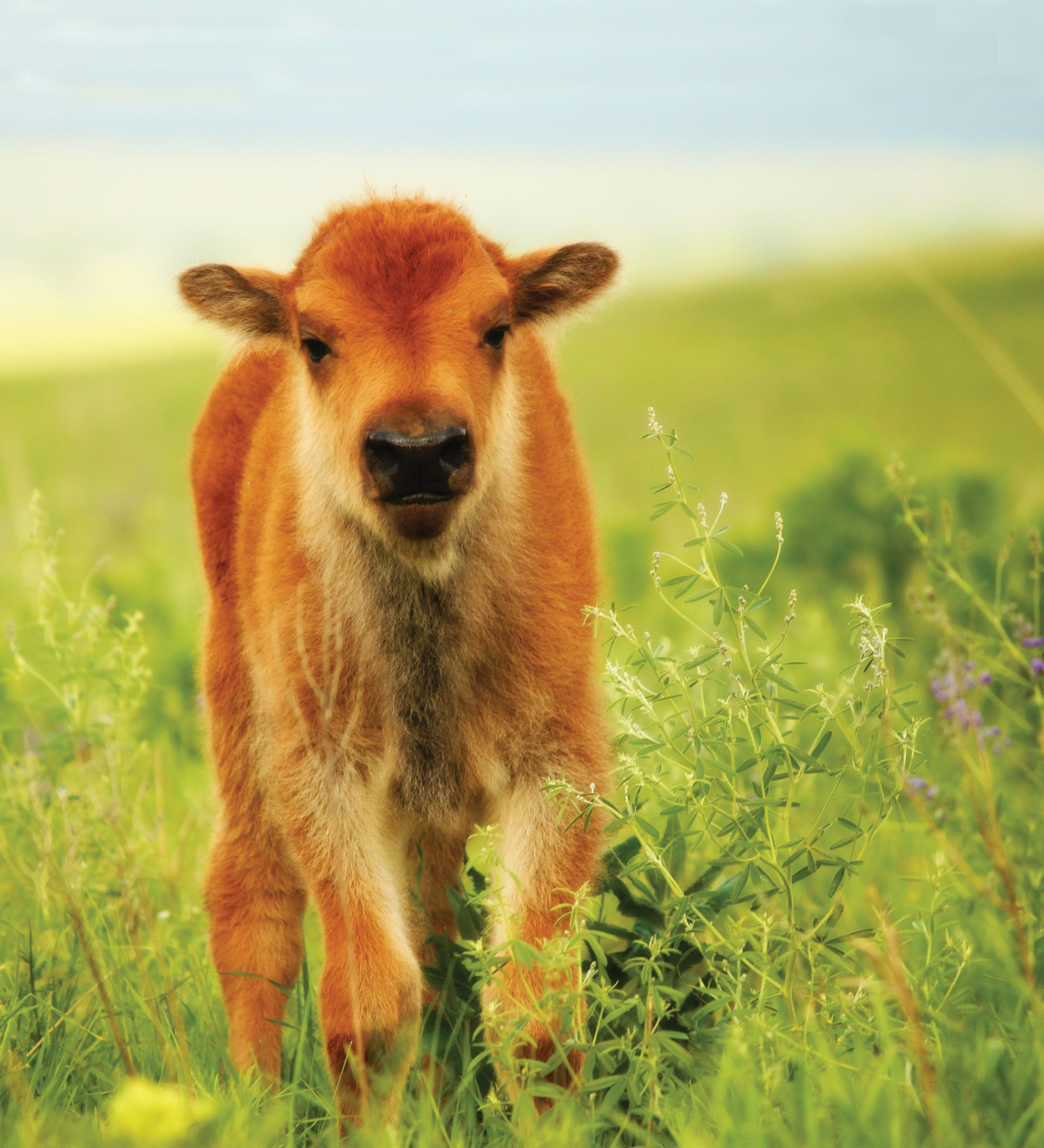
Bison calf in early summer. Photo by Josie Briggs
Rootstalk: That sounds like quite a hassle, how did that turn out?
Payne: When you run adult bulls with younger animals, they’re going to get trampled, they’re going to get horned, they’re going to get kicked, they’re going to get killed. We had five bison die as a result of running them up through the corral twice. Our herd had zero tuberculosis, none. But we lost five in the process plus all the trouble and the expense. You know we had to hire all the help to do that. And we told our neighbor, and he helps us every year with the roundup and has since the start. We said, you know if we have this problem again and you know that steer came from a pasture next to ours, fine. But if you don’t know, please don’t guess. But that’s the only problem we’ve had.
The concern about brucellosis is nonexistent. There’s a lot of fear of the unknown and that’s normal, but we hire neighboring cowboys to help us with the roundup. You know we only have five guys that work on the preserve every day, so we have to hire a lot of extra help, and generally it’s the same guys every year. And they’re all cowboys, they’re used to working animals. Of course, handling bison is different than handling cattle. You can’t be really loud with bison, because they accumulate stress and they do weird things if they get too stressed out. Cattle aren’t nearly as bothered by the noise. But these guys have done it, like I said this one guy has done it since the first roundup in ‘94.
We had one cowboy, and he was a fairly old fellow, and he helped us every year, and it’s a big deal, for them. And he had a heart attack, and I thought, boy there’s no way he’s going to help us this fall. Well he was there, and he would have been offended if he hadn’t been invited to help. We pay them, but it’s still something they look forward to. But to answer your question, I feel like our relations are very good with neighboring ranchers. We’ve done that by being responsible and being engaging.
Rootstalk: In closing, are there any stories not being told that you’d like people to know about the prairie?
Payne: Well, to really appreciate the prairie… you know, you go to some place like the Tetons, you stand there and look at those mountains and you say, “Wow, that is beautiful…” The prairies don’t grab you like that. You have to invest yourself more in the prairie. But once you do that you see there is so much there, and like I said I’ve lived in a prairie setting basically my entire life except when I was gone for formal education or military training. And I realized there’s so much I don’t know. But there’s so many layers of life on the prairie. Its’ a fascinating thing. But you get out of something what you put into it. You have to spend a lot of time getting to know the prairie, I can’t think of the writer’s name that called it the characteristic American landscape.
Rootstalk: Are you saying it’s a complex ecosystem and it’s hard to really grasp it all?
Payne: Well, it is complex, but the point is more that it doesn’t just jump out at you; you have to invest yourself in it. And by that, I mean in different seasons, because every day is different. If you go to the prairie preserve every day for a year, every day is going to be different. You’re going to have different weather conditions; you’re going to see different things. Each season is special, each season has its own special qualities, and each season is truly special. In the winter, the light is the purest and cleanest. The bison in snow is magical. Bison are descendants of Pleistocene animals; they don’t get stressed by cold until it’s a minus 43 degrees. By stressed I mean alter their metabolism. Then in the springtime the wildflowers start popping out, some of the flowering trees like red buds and plums start blooming, you get neotropical migrants passing through here.
One thing that blows my mind is the American golden plover. It has a 20,000-mile annual migratory route, and they will be here usually the middle of April. But they nest in the Arctic and they winter the southern tip of South America, in Patagonia. That’s amazing! They refuel on the prairies. Without that refueling, how would they make it all the way to the Arctic? We also get a number of neotropical migrants here. I do a lot of wildlife photography. I once saw seven species of sandpipers, in about a two-hour span on one little pond or wetland on the preserve. And if it weren’t for places like that, where would these migratory birds refuel? Then in the summer the bison rut is usually July and August. That is really dramatic. And that’s when the tallgrasses reach their apex. And then in the fall everything is prime, the bison are prime, the tallgrasses are prime. And you get the fall colors. So, every season has a lot of special qualities.
